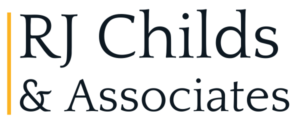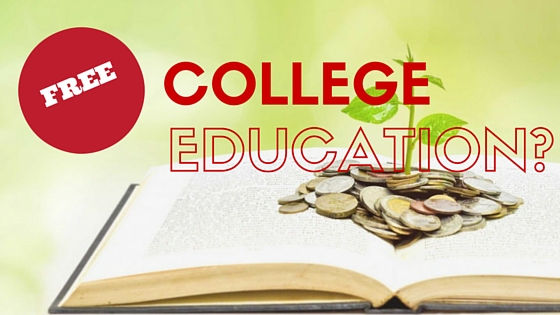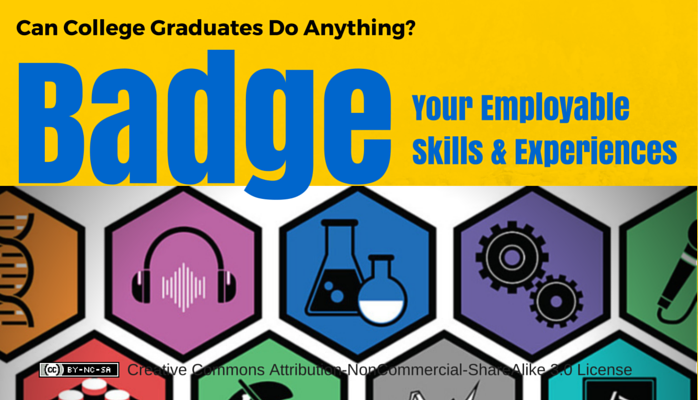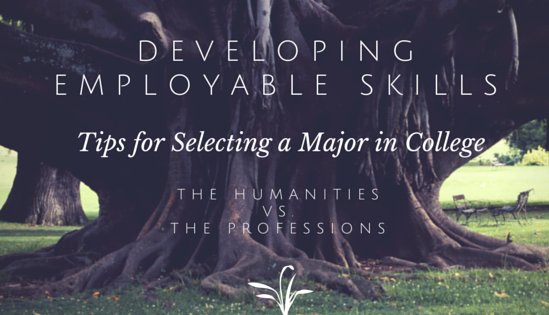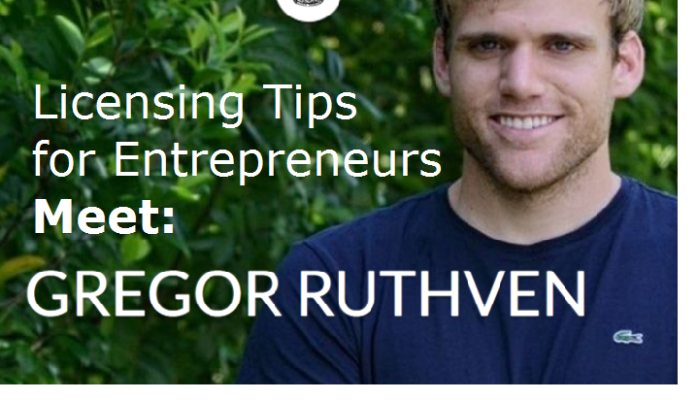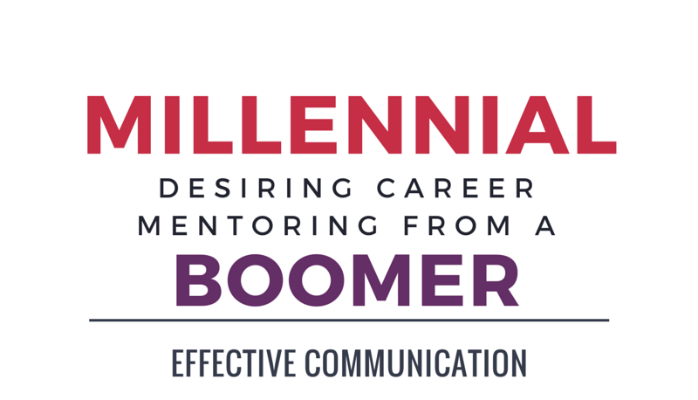
Should College Tuition Be Cost Free? The High Cost of Free College Education
There is no doubt that the rising price of higher education has become a concern of politicians, but is the solution to make it free? The College Board recently reported data indicating the published price for tuition, room and board has increased an inflation adjusted 10% over the past five years. At a typical public state college students faced a $19,548 price tag in 2015. Those choosing a private non-profit school are swallowing an average of $43,921 per year for tuition, fees, room and board. Even after accounting for institutional tuition discounts, grants and federal tax aid, the net prices continue an upward climb.
Many students rely on student loans to cover their college costs. One analyst estimated the class of 2015 is expected to produce graduates with an average student loan debt of $35,000. This is up from just under $30,000 in 2013. Despite the mounting debt, a college education does provide an economic payback. A 25-year old with a four-year degree in 2013 was expected to earn 65% more over a lifetime then his/her peer with only a high school degree. A college education also provides an important developmental function for young adults, as they develop a network of friends and relationships that last a lifetime with both social and economic benefits.
Making college more accessible and affordable is a noble goal, which includes advancing lower-cost options. During the 2016 election cycle one Presidential candidate has advocated for a tuition-free public college education for all qualified students. Senator Bernie Sanders proposed to pay for free college education model by taxing equity and bond trades, calling it a “Robin Hood Tax on Wall Street.” Other candidates suggest his plan is unworkable.
In an article titled, “Making College ‘Free’ Will Only Make It More Expensive” author Anne Bradley reminds us that there is such thing as a free lunch. “Making college free of charge doesn’t make it free to provide,” claims Bradley. Someone has to pay. She goes on to argue that making college free actually makes it more costly to provide as more people will consume college who are neither interested, prepared nor suited. Some will persist, but many will taste and then withdraw or drop out. This follows economic logic born out in experience: overconsumption drives up costs and ultimately leads to scarcity. Hence, taxes are increased to redistribute income to many who drop out and never benefit, input costs rise and suppliers leave the market. This is not an efficient model. Prices provide important signals to the market regarding relative scarcity of an item.
Bradley concludes that market-based competition among suppliers and innovative solutions are more efficient at allocating education resources. “That means opening more universities or providing professional certificates and vocational schooling. This competition will also drive down prices of higher education over time,” concludes Bradley.
Some of the emerging innovations that lower the total cost of higher education include dual-enrollment and competency-based education. Dual enrolled students earn college credit while taking certain high school courses taught by college professors. Competency-based models allow students to earn credit for what they already know, enabling them to graduate sooner and with fewer courses for which to pay tuition.
Competition, innovation and entrepreneurial initiatives from suppliers of college credit, combined with a more knowledgeable and savvy consumer of the college experience are the forces that will make higher education more affordable. Making college tuition free through government subsidization will lead to less innovation as it will entrench the establishment. It will also cause budgets to bloat, bureaucracy to expand, and ultimately increase scarcity. A system of a college education free to the student, will end up with the payer—in this case the Federal Government—deciding who gets to go to college and what is taught.
Badges Reflect Employable Skills
In a previous post, I discussed the economic value of various college degrees. I provided a response to the question, “How much can I earn with a degree in…?” Students will benefit from a professional degree with a strong liberal-arts general education, or a humanities degree with a professional minor. But, now I want to flip the perspective. From the employer’s perspective the question is, “How much can I earn if I hire a college graduate like you?” A college degree opens the door, but demonstrating that you have employable skills, whether they be soft-skills or technical, is key to landing a job.
The economic reality of the labor market in the for-profit world is that wage income is related to a person’s ability to produce goods and/or services an employer can sell for a profit. The more efficient you are, the more valuable you will be to an employer. A degree signals that an applicant has accomplished the academic requirements of a major, has participated in the culture of the college, and developed a network of relationships. In many cases a degree will accompany an internship in a graduate’s field of interest. For some professions, a degree is a requirement for taking a licensing exam—such as the CPA exam for accountants or RN boards for nurses.
One emerging trend is for employers to increase their assurance that new hires have the skills indicated on their resumes. Digital badges provide such evidence. They are earned by demonstrating a specific skill or attribute. Think of digital badges as mini credentials that can be displayed on one’s LinkedIn account or a digital portfolio that provide evidence of employable skills or accomplishments.
Digital badges are achievements verified through credible organizations, trade associations or accredited schools. They are awarded upon demonstrating specific skills. In the ebook, Game Changers: Education and Information Technologies, the authors present a case study for how Mozilla is advancing the cause of using open-badges as an alternative to or supplement for traditional degrees. Badges are earned and awarded when individuals demonstrate their competency in a particular task or skill.
For instance, if you apply for job that requires skills in Photoshop, PowerPoint, and grant writing, you can apply for a badge by testing your competency (or providing evidence that is peer-reviewed) at organizations such as Smarter or Lynda.com and some colleges. Once they are obtained, you can display badges on your LinkedIn account. An employer can click on the badge and discover the credentialing organization to verify its credibility.
Upon graduation, the traditional transcript lists the degree conferred, courses taught, and grades earned; however, forward-thinking schools are also including digital badges as symbols documenting specific competencies or experiences that contribute to your productivity. Think of them as microcredentials that enhance your employability.
Along with your degree, you can enhance the way you market your employable skills by earning and displaying digital badges. Doing so can be part of a commitment to lifelong learning and continuous enhancement of your productivity. Employers will then have more information indicating the specific types of skills and experiences that will make you a competitive candidate.
What Is a College Degree Worth?
What kind of income can I hope to earn if I graduate with a history degree? Or, would I be better off to major in business? These are questions prospective students and parents have asked me for years. And for good reason. With the rising cost of higher education and subsequent student loan debt, asking the economic return of a degree is a prudent question. What are the trade-offs between obtaining an undergraduate degree in the humanities or obtaining an undergraduate degree in one of the professions? The answer depends on whether you take a long or short-run view.
Yes, business is the most popular degree in the USA. According to the National Center for Educational Statistics, of the total 1,840,164 undergraduate degrees conferred in 2012, business represented 360,823 (13%), whereas history and social science combined represented 178,534 (9.7%). The National Association of Colleges and Employers reported the 2014 average starting salaries of all bachelor degree graduates was $48,707. For business majors the average was $57,229 (17.5% above average) and for humanities and social science it was $38,049 (21.9% below average). Clearly, if you want to beat the average for starting wages, major in business. But how do graduates fare in the long-run?
As it turns out, a study from the Association of American Colleges & Universities, revealed that liberal-arts majors (including history, humanities, and social sciences) earn over $2,000 more in their peak earning years (mid 50s) than those starting with a professional degree. Even though liberal-arts majors start out with lower paying jobs, as a group, they advance rapidly in their earnings and overpass their peers who majored in business. Why? Three reasons can be given. First, they often start out in human services oriented jobs with lower wages, but migrate to higher paying jobs later. Second, they are well prepared for graduate school, or MBA programs, which helps to advance their careers. Finally, the focus of a liberal-arts degree emphasizes those skills and intangible attributes that employers say they want: writing, communication, persuasion, problem-solving, service, creativity, and critical thinking.
For instance, Carly Fiorina was the first woman CEO at Hewlett-Packard (HP) and for any other Fortune 50 company. After college, her first job was as a receptionist. Then, she was an English teacher. This was after earning a degree in medieval history from Stanford University! Fiorina went on to earn an MBA and began advancing in a career at Lucent prior to being appointed CEO at HP. She credits her business leadership success to the analytical, critical thinking, and communication skills emphasized in her undergraduate history studies.
So what major should you consider? Here are three options and a suggestion.
- Major in a degree in the humanities such as history, literature, arts, design, communication, the classics, or pre-law. Any of these majors will require a considerable amount of reading, writing, and performing. Each will hone reflective and listening skills and build your capability of synthesizing information. You will develop an appreciation for diverse ways of viewing the big questions in life and learn to distinguish between the meaningful and meaningless. Moreover, you will develop an appreciation for living a life worth leading. Of course, you will also develop long-term employable skills such as creativity, communication, leadership, global awareness, and critical thinking.
- Major in a professional degree such as business, computer science, or engineering. Graduates with these majors are in high demand and the initial pay after graduation is among the highest. The focus of these degrees is to develop competencies in the technical skills required for entry-level work. For instance, being able to interpret financial reports, identifying market segments, writing code, designing circuits, or converting CAD drawings to outputs on a 3D printer. The assumption is that through general education the student has the basic language and mathematical knowledge as pre-requisites to learning the technical skills. Most programs also provide specific training or a period of mentoring as part of the on-boarding process for entry-level professions.
- Study both. Select a school with a strong reputation of liberal-arts general education (often these are smaller, private, or faith-based) and major in a humanities degree and minor in a profession, such as business. Alternatively, major in a profession and minor in the humanities. Yes, you can do both and usually graduate within four years! Your general education courses are not just something “to get out of the way” before you take your courses in your major. Rather, the liberal arts sharpen the mind, enhance communication capabilities, build resilience, and inspire creativity. Remember, the intellectual foundations of a challenging liberal arts general education and professional education are essentially the same.
Advice from the Dean’s Office: The third choice above provides economic advantages for both the short run and long run. Courses in the liberal-arts are as important as those in a professional major for building employable competencies that last a lifetime. One of greatest areas in which new graduates fall short is lack of a balanced education. This is best represented by the statement, “I need workers with a blend of technical and soft skills gained from liberal arts.”
In a recent national survey conducted by CareerBuilder, hiring managers indicated that the complexity of their organization and markets requires a broad set of skills. This result suggests more emphasis on “real world learning.” To acquire experience in the workplace, try out an internship and gain on-the-job skills. This will give you opportunity to apply your theoretical knowledge in a more controlled, but nevertheless, professional setting.
For more information, you can download a free e-book from AAC&U describing research on how liberal-arts and science majors fair in the job market.
From Idea to Licensing Deal: Tips for Entrepreneurs
A young entrepreneur who I had advised on a previous venture recently ask for feedback on his newest idea. Gregor Ruthven has developed a simple solution for adjusting the performance characteristics of a surfboard for different wave conditions. He is considering a go-to-market strategy by licensing his new invention. You may find the tips below I offered Gregor useful as well.
“A couple of years ago I was surfing on this 7’0” funboard in some less than stellar waves. I noticed that the board just wasn’t fast enough to keep up with the mushy waves. I kept getting stuck in the whitewash and was frustrated because this was my only board,” claimed Gregor.
He could solve his problem with existing technology, but that would require purchasing multiple sets of boards and amassing a collection of fins for different wave conditions. Although multiple boards and fins are ideal, a solution would help to expand a single board’s optimal range. Entrepreneurs are those who see problems as opportunities to overcome with innovative solutions. So, Gregor went to designing a solution starting with two questions:
“Why are things the way they are?”
“How can they be different?”
Surfers know that the type of fins can be swapped in and out to balance speed and control, but changing the fins provides only one option to fine-tune a board’s performance. After trial and error, Gregor designed a system that can adjust the angles of the fin itself, specifically cant and pivot. His solution is an easier-to-use adjustable fin box system that is compatible with other fins on the market, and one that can be integrated into any surfboard during manufacturing. He proved the concept through prototyping on a 3D printer. He is now looking to take it to the next level. If this solution works for him, is it possible to commercialize the idea and license it to an interested partner?
“The benefit to the surfer is that one board can now be fine-tuned like never before,” says Gregor. “The board and fin manufacturers that incorporate my invention will provide their customers more versatility for different conditions and types of waves. This will appeal to both recreational surfers and high performance competitors.”
With the assistance of a legal firm specializing in intellectual property (IP), he filed a patent on the idea. With his IP established and a non-disclosure agreement in hand, he is ready to begin pitching the idea as a licensing opportunity. Here are some licensing tips I passed on to Gregor that may help you:
- Understand your partner’s motives. Do they want to take your idea to market, or do they want to sit on it as means to stifle innovation that could disrupt their own business models? I suggested negotiating a license agreement that safeguards his interest. An attorney can advise language to such affect.
- Determine what you plan to license. Do you want to assign patents, or do you want to develop an aspect of the product and license its use? In Gregor’s case, he is not interested in producing the product, but he wants to license the use of the patent or assign it outright. There is a trade-off between these two options. More control means more work, but may yield higher revenues in the long run. Immediately assigning the patent to the product means less work, but would require giving up control.
- Assess the partner(s) fit. Do you want an exclusive agreement with one partner, or do you plan to license the technology to all? Consider the market structure of the industry. In Gregor’s case, there are a few large brands that dominate the market. Signing an exclusive deal with one is a consideration. This is what Apple did when launching the iPhone. They licensed with one carrier, AT&T, and then as the market matured, licensed to others.
- Decide what payment structure works for you. I’ve seen deals vary from an outright cash payment for the intellectual property, to a strict royalty based on revenue. The former provides a predetermined amount of up-front cash, the latter an on-going annuity, but the amount is uncertain. Or, a combination of the two may satisfy both parties’ cash requirements and toleration for risk. The industry standard becomes the starting place for negotiation.
You can too follow Gregor’s progress on this venture and learn more about his past accomplishments by reaching out to him at www.meetgregor.com
If you seek more information on licensing intellectual property, check with legal counsel that is knowledgeable in your industry. Useful information can also be accessed from the World Intellectual Property Organization at
Career Advice to a Millennial
A former student recently contacted me asking for career advice. She is working in public accounting as an associate at a top ten firm. Passing all her CPA exams on her first try, she is a rising star at her office with excellent performance reviews. She called to ask my opinion about how to communicate with her career coach. “I plan on telling my coach what I want out of my career. Either the firm needs to meet my needs, or I’m going to tell them I have to look for another company,” she said. Continuing, “My coach happens to be my direct report manager and is also a friend.” It was clear this alumna’s goals included looking for more opportunities that offered a more stable work schedule and cross training in another line of business with the firm. She also displayed characteristics typical of millennials in the workplace: needing to be heard, asking for structure, seeking purpose, and desiring friendship.
Being from the Boomer generation myself, I felt her approach was a bit too direct and self-oriented. So, I provided her with the following tips:
- Begin with your end goal in mind, but start with a question, not a demand. I suggested she ask her coach, “What skills and abilities do you see in me that could be used in other lines of business at our firm?” I suggested that the response she receives may be the answer she was looking for, or open her eyes to something of interest that she had not yet considered. By using this approach, the power remains with the coach, but the choice remains with her.
- Share your desires, but demonstrate loyalty to the firm. For instance, she could state, “Can you help me find opportunities, within the firm, for someone with my skills that provide more stable work hours?” This approach shows the coach her commitment to the firm and a willingness to align her desires with the firm’s needs.
- Express gratefulness for the opportunities you have had thus far and share how the work has provided purpose, but also express the potential benefits of a new assignment. Demonstrate how it will accelerate your sense of purpose and motivation with the firm’s mission. “I feel the work I’ve been doing for our major client is making a difference. How do those in another line of business find meaning in their work?” The doors should be open for meaningful options to employees who seek that purpose within the firm.
- Understanding the distinction between friendship and the transaction-based reality of manager-subordinate relationships. Treat this meeting as a mentor-mentee relationship as opposed to peer-to-peer. Save the small talk for after the work-related discussion. “Besides the strengths you’ve shared with me, please tell me the top two areas needing the most improvement if I am to advance at this firm?” Relationships are important for millennials, but compartmentalizing the roles are key to maintaining healthy boundaries. Develop comradery at work, but build the friendship after hours. It’s great to be able to work with others you actually enjoy as friends.
I love working with and mentoring millennials. They keep me feeling young and idealistic. A week later, I spoke to this alumna. She was excited to report that her conversation went well. She was offered an opportunity to transition to another line of business that met her needs. Her coach reinforced the firm’s commitment to help millennials build their careers.
The National Commerce Foundation recently published a great research-based resource regarding millennials and career development. For more information you may download at:
http://www.uschamberfoundation.org/sites/default/files/article/foundation/MillennialGeneration.pdf
